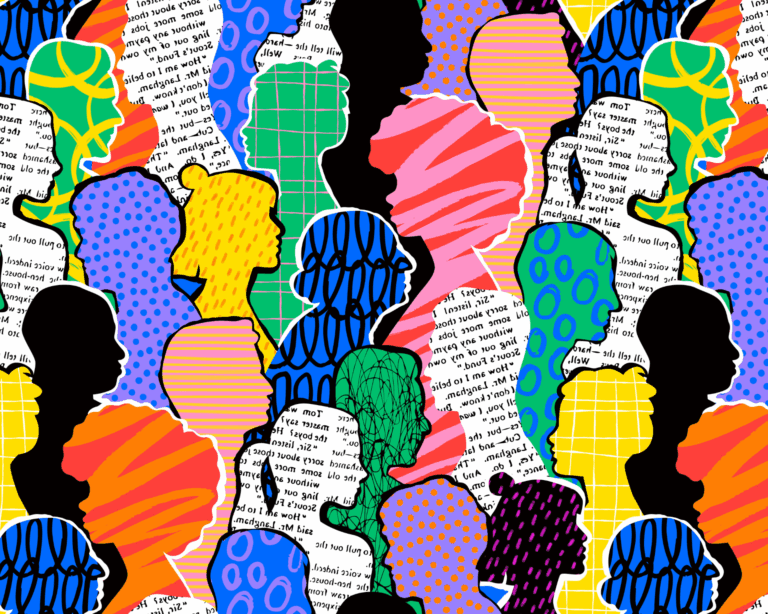Most People Support DEI—They Just Don't Know It
Americans consistently underestimate how much others, across age, race, and political affiliation, value diversity, equity, and inclusion.

Read Time: 4 minutes
Published:
Walk into any boardroom, classroom, or newsroom in 2025, and you’ll be hard-pressed to avoid these three letters on repeat: DEI. Diversity, equity, and inclusion have become flashpoints in the culture wars, used by some as shorthand for “wokeness” and by others as the foundation for fairness, opportunity, and belonging. But far from being a political trend, DEI offers guiding principles used across sectors, including education, business, and law, to improve population health. In public health specifically, DEI initiatives aspire to influence who gets access to health—and who doesn’t. While most Americans support the spirit of DEI initiatives (even if not the exact terminology), many mistakenly believe their neighbors do not.
A series of seven studies conducted by Naomi Isenberg and Markus Brauer exposed this disconnect. In each study, Americans consistently underestimated how much others, across age, race, and even political affiliation, valued diversity and inclusion. In one study, participants underestimated their peers’ agreement with 15 pro-diversity statements by over 27% (actual support: 82.26%, perceived support: 55.09%).
Study participants also overestimated support for anti-diversity statements by almost 20%. This misperception, which researchers define as “pluralistic ignorance,” has real-world consequences. When people believe DEI is unpopular, they are less likely to speak up when they witness discrimination. They may hesitate to invite diverse perspectives, avoid initiating or championing inclusive practices, or withdraw support from policies aimed at addressing inequality. This collective silence reinforces itself, stalling momentum for meaningful change.
These values are interconnected but not interchangeable.
After President Trump signed an executive order aimed at eliminating DEI programs in federal agencies, more than 20 states have followed suit by proposing or passing bills targeting DEI in universities, hospitals, and health departments. This policy trend, unfolding in parallel with widespread misperceptions about DEI support, raises questions about the influence of pluralistic ignorance in institutional decision-making.
To understand what’s at stake, it’s worth revisiting what DEI actually means.
Diversity refers to the presence of different identities in a given space, such as racial, ethnic, gender, disability, religious, socioeconomic, and beyond. Equity goes further, ensuring that systems account for economic, social, and historical disadvantages so that everyone has a fair shot at health and opportunity. Inclusion means creating environments where people feel respected, heard, and given the chance to contribute. These values are interconnected but not interchangeable. A workplace can be diverse but not inclusive. A health system can be inclusive in intention but inequitable in outcome.
DEI is not the same as health equity. DEI focuses on organizational change—hiring practices, leadership diversity, and inclusive communication. Health equity addresses the broader systems that determine who gets sick, who gets care, and who gets left behind. Still, the two are inseparable. DEI is often the vehicle for advancing health equity, whether through more culturally competent care, inclusive medical school admissions and curriculum, or equitable research agendas.
As the research by Isenberg and Brauer demonstrates, a widespread form of pluralistic ignorance leads individuals to believe their views on diversity and inclusion are in the minority, even when the majority shares them. This misunderstanding can weaken advocacy for DEI programs and reduce institutional accountability, as leaders may believe these efforts are unpopular or divisive.
Most Americans want inclusion, fairness, and equity, even if they hesitate to say so out loud.
When DEI is defunded, the health consequences are not abstract. Patients are more likely to trust and adhere to care when treated by providers who share similar cultural or racial backgrounds. One landmark study found that Black men seen by Black physicians were significantly more likely to agree to preventive services, including cardiovascular screenings, compared to those seen by non-Black physicians. In practice, a Kaiser Permanente program placed Spanish-speaking mental health providers in high-need areas, which helped Spanish-speaking patients stay in treatment.
It’s worth remembering that many policies we take for granted today are rooted in DEI principles. The Americans with Disabilities Act mandates accessible spaces for all. The Family and Medical Leave Act protects workers who need time to care for their families. Pay equity audits, like those conducted in the Obama White House, help close gender wage gaps. These policies aren’t partisan—they improve quality of life, reduce stress, and support health. Yet because they’re not always labeled as “DEI,” they often avoid the backlash, even while advancing the very values now under attack.
Public health has a responsibility to break the cycle of pluralistic ignorance by making the invisible visible: most Americans want inclusion, fairness, and equity, even if they hesitate to say so out loud.
DEI is a cornerstone of a healthy society. No matter what we call it, the values of diversity, equity, and inclusion are worth defending, not just because they’re ethical, but because they save lives.



